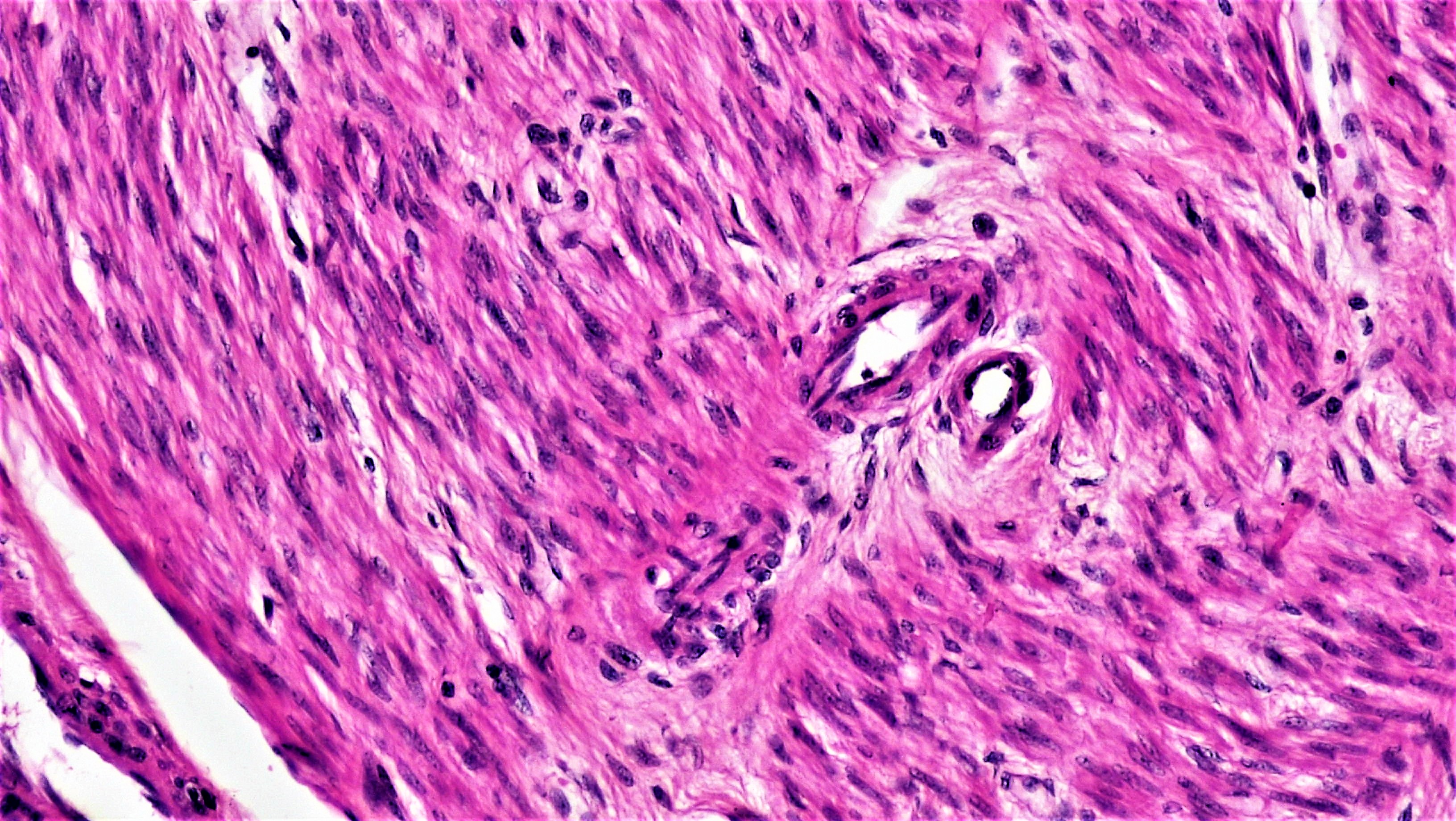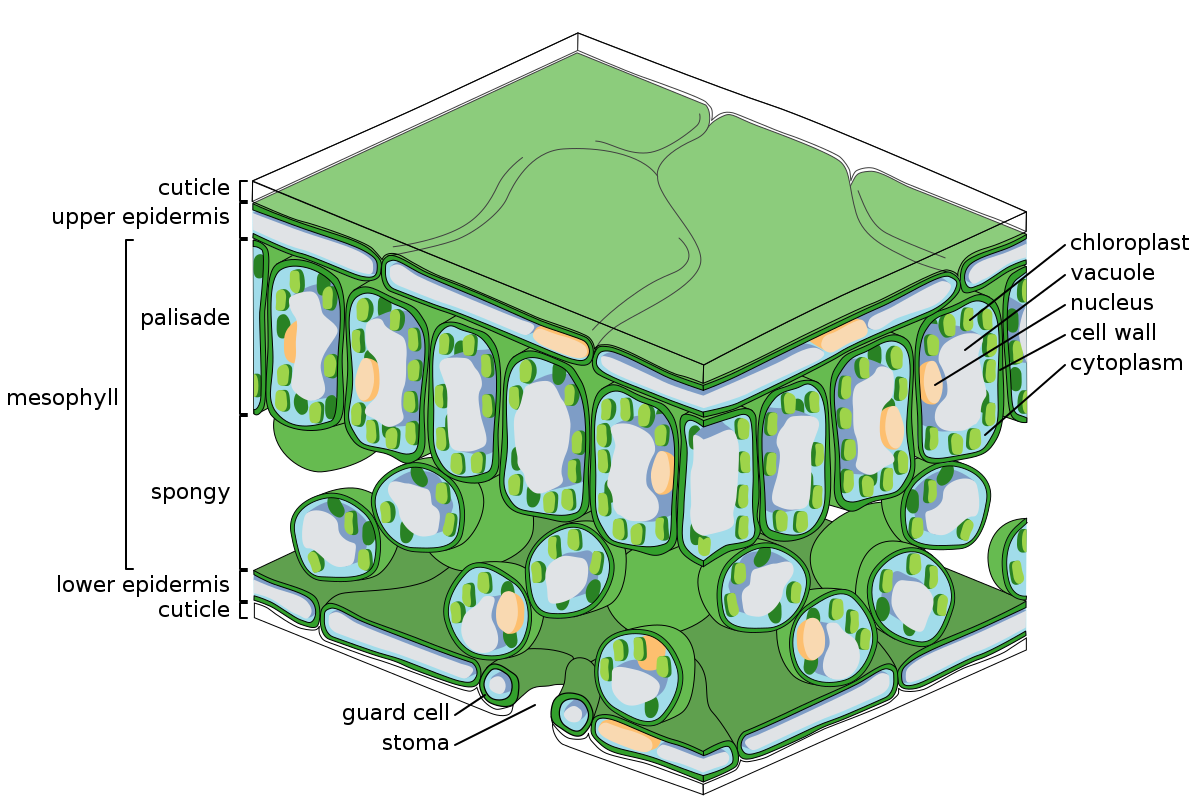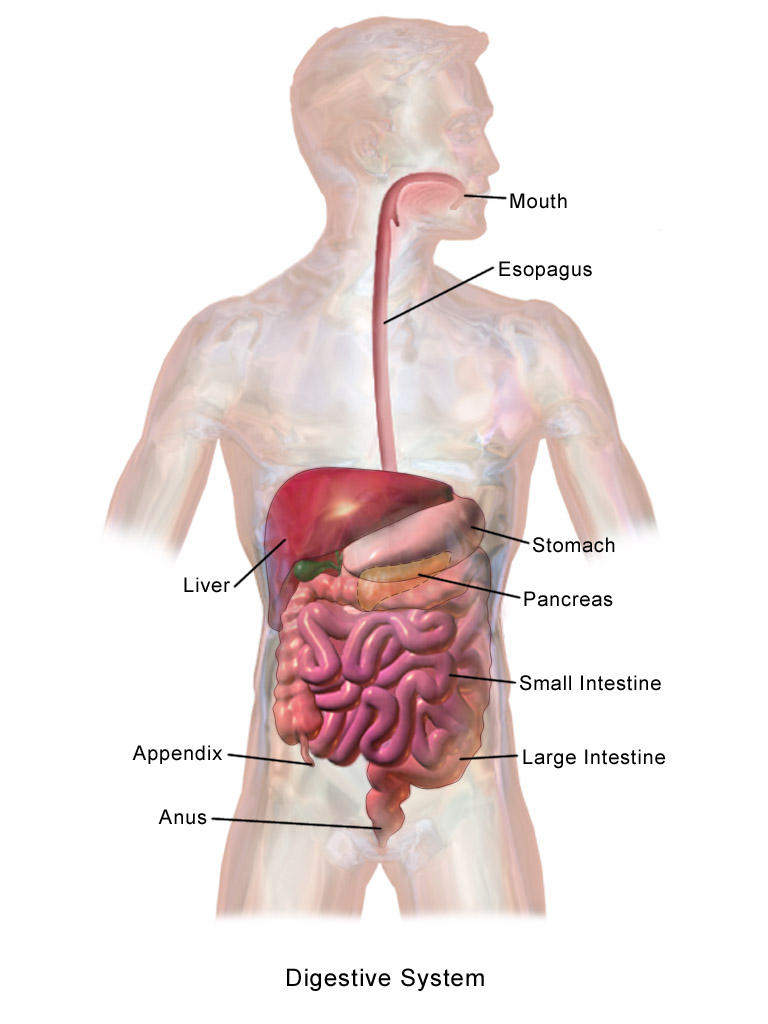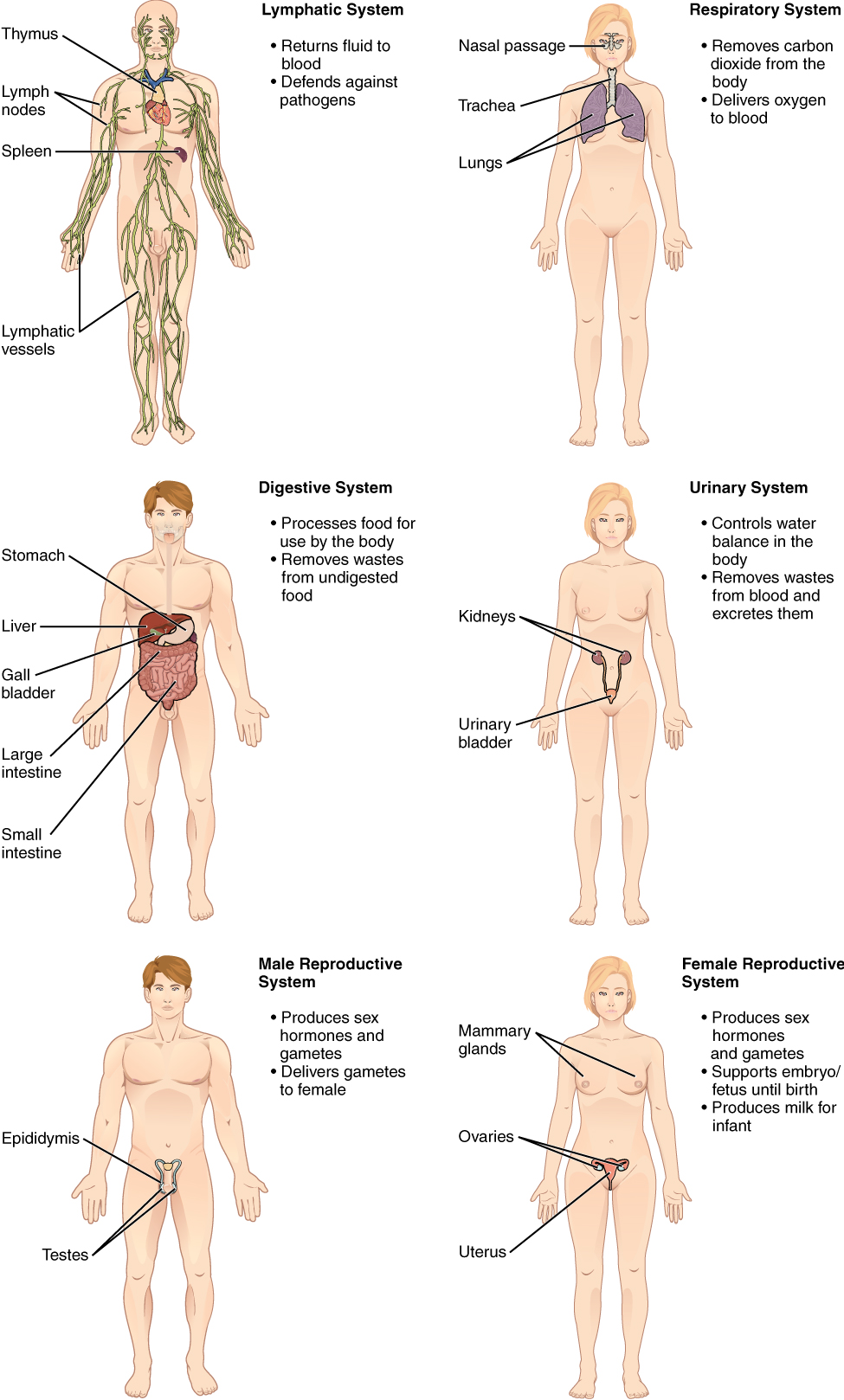GCSE Biology - AQA
1.3.1 - Tissues, Organs and Organ Systems
Jump to:
Tissues, Organs and Organ Systems
The cells in multicellular organisms such as plants and animals are often organised into tissues, organs and organ systems.
Tissues
A tissue is a group of cells that work together to carry out a function.
For example, in animals, many individual muscle cells are connected together to form muscle tissue. They work together to perform the function of contracting to generate movement.

Muscle tissue - made up of many individual muscle cells.
Organs
An organ is a group of tissues that work together to carry out a function.
A leaf is an example of an organ in a plant. A leaf is made up of many different tissues which work together to perform the function of carrying out photosynthesis.

A leaf is an organ in a plant.

Diagram of the structure of a leaf, showing the many different tissues that make it up. Image: Leaf Tissue Structure.svg by Zephyris on Wikimedia Commons
Organ systems
An organ system is a group of organs that work together to carry out a function.
An example of an organ system in an animal is the digestive system. This is made up of many different organs, including the stomach, small intestine and large intestine. These work together to carry out the function of breaking down food into small molecules that can be absorbed into the bloodstream.

The human digestive system. Image: Adult Digestive System.png by BruceBlaus on Wikimedia Commons.
A multicellular organism can have many organ systems
Multicellular organisms often have many organ systems.
For example, most animals have a digestive system, a circulatory system, a reproductive system, an immune system, and so on.

Some of the organ systems in the human body. Image: Organ_Systems_II by Connexions on Wikimedia Commons (CC BY 3.0: https://creativecommons.org/licenses/by/3.0/deed.en)
Flashcards
Flashcards help you memorise information quickly. Copy each question onto its own flashcard and then write the answer on the other side. Testing yourself on these regularly will enable you to learn much more quickly than just reading and making notes.
1/3
What is a tissue?
2/3
What is an organ?
3/3
What is an organ system?
Donate
Please consider donating to support Mooramo. I am one person doing this whole project on my own - including building the site, writing the content, creating illustrations and making revision resources. By making a one-time or repeating donation you will buy me time to work on Mooramo, meaning that I can get new content on here more quickly.
Donate